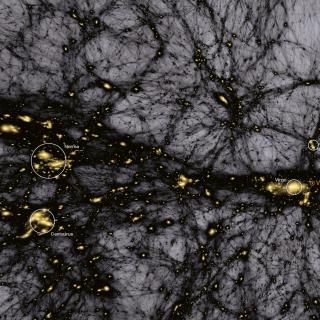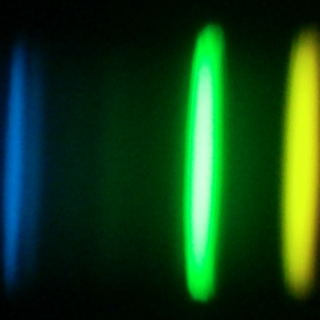Bibcode
DESI Collaboration; Adame, A. G.; Aguilar, J.; Ahlen, S.; Alam, S.; Aldering, G.; Alexander, D. M.; Alfarsy, R.; Allende Prieto, C.; Alvarez, M.; Alves, O.; Anand, A.; Andrade-Oliveira, F.; Armengaud, E.; Asorey, J.; Avila, S.; Aviles, A.; Bailey, S.; Balaguera-Antolínez, A.; Ballester, O.; Baltay, C.; Bault, A.; Bautista, J.; Behera, J.; Beltran, S. F.; BenZvi, S.; Beraldo e Silva, L.; Bermejo-Climent, J. R.; Berti, A.; Besuner, R.; Beutler, F.; Bianchi, D.; Blake, C.; Blum, R.; Bolton, A. S.; Brieden, S.; Brodzeller, A.; Brooks, D.; Brown, Z.; Buckley-Geer, E.; Burtin, E.; Cabayol-Garcia, L.; Cai, Z.; Canning, R.; Cardiel-Sas, L.; Carnero Rosell, A.; Castander, F. J.; Cervantes-Cota, J. L.; Chabanier, S.; Chaussidon, E.; Chaves-Montero, J.; Chen, S.; Chen, X.; Chuang, C.; Claybaugh, T.; Cole, S.; Cooper, A. P.; Cuceu, A.; Davis, T. M.; Dawson, K.; de Belsunce, R.; de la Cruz, R.; de la Macorra, A.; Della Costa, J.; de Mattia, A.; Demina, R.; Demirbozan, U.; DeRose, J.; Dey, A.; Dey, B.; Dhungana, G.; Ding, J.; Ding, Z.; Doel, P.; Doshi, R.; Douglass, K.; Edge, A.; Eftekharzadeh, S.; Eisenstein, D. J.; Elliott, A.; Ereza, J.; Escoffier, S.; Fagrelius, P.; Fan, X.; Fanning, K.; Fawcett, V. A.; Ferraro, S.; Flaugher, B.; Font-Ribera, A.; Forero-Romero, J. E.; Forero-Sánchez, D.; Frenk, C. S.; Gänsicke, B. T.; García, L. Á.; García-Bellido, J.; Garcia-Quintero, C.; Garrison, L. H.; Gil-Marín, H.; Golden-Marx, J.; Gontcho, S. Gontcho A. et al.
Bibliographical reference
The Astronomical Journal
Advertised on:
8
2024
Citations
439
Refereed citations
354
Description
The Dark Energy Spectroscopic Instrument (DESI) completed its 5 month Survey Validation in 2021 May. Spectra of stellar and extragalactic targets from Survey Validation constitute the first major data sample from the DESI survey. This paper describes the public release of those spectra, the catalogs of derived properties, and the intermediate data products. In total, the public release includes good-quality spectral information from 466,447 objects targeted as part of the Milky Way Survey, 428,758 as part of the Bright Galaxy Survey, 227,318 as part of the Luminous Red Galaxy sample, 437,664 as part of the Emission Line Galaxy sample, and 76,079 as part of the Quasar sample. In addition, the release includes spectral information from 137,148 objects that expand the scope beyond the primary samples as part of a series of secondary programs. Here, we describe the spectral data, data quality, data products, Large-Scale Structure science catalogs, access to the data, and references that provide relevant background to using these spectra.
Related projects

Cosmology with Large Scale Structure Probes
The Cosmic Microwave Background (CMB) contains the statistical information about the early seeds of the structure formation in our Universe. Its natural counterpart in the local universe is the distribution of galaxies that arises as a result of gravitational growth of those primordial and small density fluctuations. The characterization of the
FRANCISCO SHU
KITAURA JOYANES

Chemical Abundances in Stars
Stellar spectroscopy allows us to determine the properties and chemical compositions of stars. From this information for stars of different ages in the Milky Way, it is possible to reconstruct the chemical evolution of the Galaxy, as well as the origin of the elements heavier than boron, created mainly in stellar interiors. It is also possible to
Carlos
Allende Prieto